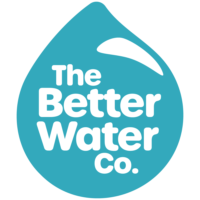2020 Water Analysis Report
The Better Water Co. Water Quality Report
August, 2020
The Better Water Co. is sourced from the Municipal Water Supply provided by the Los Angeles Department of Water and Power. It utilizes water brought to the city from the network of Los Angeles Aqueducts, local groundwater and supplemental water purchased from the Metropolitan Water District of Southern California (MWD) that is delivered through the Colorado River Aqueduct and the State Water Project’s California Aqueduct.
Bottled by:
12802 Knott St
Garden Grove, CA 92841
Distributed by:
The Better Water Co.
Venice, CA 90291
Statement of quality
The standard of quality for bottled water is the highest level of a contaminant that is allowed in a container of bottled water, as established by the United States Food and Drug Administration (FDA) and the California Department of Public Health. These substances can include but are not limited to microbiological contaminants, pesticides, organic & inorganic contaminants and radiological contaminants. The standards for these types of contaminants are based on the public drinking water standards of the United States Environmental Protection Agency (EPA) or the California Department of Public Health.
Maximum contaminant level (MCL)
Maximum contaminant level is the highest level of a substance allowed in drinking water – bottled and tap water – according to standards set by the U.S. Environmental Protection Agency (EPA) or the California Department of Public Health.
Primary Drinking Water Standard
Primary Drinking Water Standard is the legally established MCLs for contaminants present in the drinking water that might affect health. They are set by U.S. Environmental Protection Agency (EPA) or the California Department of Public Health, alongside the requirements for water monitoring and reporting and treatment requirements.
Public Health Goal (PHG)
Public Health Goal are set by the California Environmental Protection Agency to determine the level of a contaminant present in drinking water that does not pose a known or expected risk to health.
The Better Water Company Treatment Process
Ten Micron Sediment Filter, Charcoal Carbon Filter, Catalytic Carbon Filter, Water Softening, Dual Membrane Filter, Dual Membrane Filtration Reverse Osmosis, Post Carbon Filter, Ultra Voltage UV light Treatment.
Product Recall Information
Recalls are actions taken by a firm to remove a product from the market. Recalls may be conducted on a firm’s own initiative, by FDA request, or by FDA order under statutory authority. More information on recalls can be obtained from: https://www.fda.gov/consumers/consumer-updates/fda-101-product-recalls
For further information on water quality, please contact:
The Better Water Co.,
328 Lincoln Blvd, Venice, CA 90291
1.844.344.2552
info@thebetterwaterco.com
www.thebetterwaterco.com
Statements Required Under California Law
“Drinking water, including bottled water, may reasonably be expected to contain at least small amounts of some contaminants. The presence of contaminants does not necessarily indicate that water poses a health risk. More information about contaminants and potential health effects can be obtained by calling the United States Food and Drug Administration, Food and Cosmetic Hotline 1-888-SAFEFOOD (1-888-723-3366).”
“In order to ensure that bottled water is safe to drink, the United States Food and Drug Administration and the State Department of Public Health prescribe regulations that limit the amount of certain contaminants in water provided by bottled water companies.”
“Some persons may be more vulnerable to contaminants in drinking water than the general population. Immune-compromised persons, including, but not limited to, persons with cancer who are undergoing chemotherapy, persons who have undergone organ transplants, persons with HIV/AIDS or other immune system disorders, some elderly persons, and infants can be particularly at risk from infections. These persons should seek advice about drinking water from their health care providers. The United States Environmental Protection Agency and the Centers for Disease Control and Prevention guidelines on appropriate means to lessen the risk of infection by cryptosporidium and other microbial contaminants are available from the Safe Drinking Water Hotline (1-800-426-4791).”
“The sources of bottled water include rivers, lakes, streams, ponds, reservoirs, springs, and wells. As water naturally travels over the surface of the land or through the ground, it can pick up naturally occurring substances as well as substances that are present due to animal and human activity. Substances that may be present in the source water include any of the following:
- Inorganic substances, including, but not limited to, salts and metals, that can be naturally occurring or result from farming, urban storm water runoff, industrial or domestic wastewater discharges, or oil and gas production.
- Pesticides and herbicides that may come from a variety of sources, including, but not limited to, agriculture, urban storm water runoff, and residential uses.
- Organic substances that are byproducts of industrial processes and petroleum production and can also come from gas stations, urban storm water runoff, agricultural application, and septic systems.
- Microbial organisms that may come from wildlife, agricultural livestock operations, sewage treatment plants, and septic systems.
- Substances with radioactive properties that can be naturally occurring or be the result of oil and gas production and mining activities.

